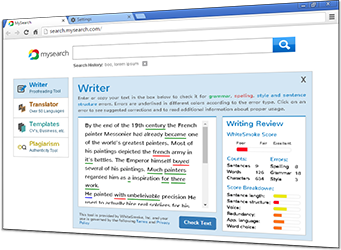Dos and Don'ts When Using a comma
As our article shows, the ubiquitous comma, as it appears just everywhere has numerous uses. The understanding of when and how to use the comma, is vital to writing quality English in a range of contexts.
1. Use a comma before (not after) a coordinating conjunction that links two or more independent clauses. The coordinating conjunctions are: and, but, for, or, nor, yet, so.
- The math test scores were low, but the English papers were outstanding.
- The students had not completed all their exams, nor did the teachers finish grading the papers.
2. If the two independent clauses are short and there is no risk of ambiguity if a comma is not used, you can omit the comma. However, in academic writing comma usage is always preferred.
The grades were final and there was no discussion about them.
3. Avoid comma splices, which result in a common error that occurs when a comma is used to separate independent clauses which are not linked by a conjunction. The solution to a comma splice situation is either to add a conjunction, or separate the independent clauses into two individual sentences or to use a semi-colon. Your choice depends on the context and what you want to emphasize.
- No: The grades were final, there was no discussion about them.
- Yes: The grades were final, and there was no discussion about them.
Note: A comma splice may be accepted only in more casual informal writing, where the semi-colon may appear too formal.
The students were happy, the teachers were too.
4. Do not use a comma within clauses, dividing between subject and predicate or separating between parts of compound subjects and compound predicates. In other words, do not use a comma before a coordinating conjunction to separate only two words, two phrases or two dependent clauses. In the following examples, no comma is needed as they are all short one-clause sentences with no series of more than two consecutive parts.
- No: The students and the teachers, celebrated the end of the school year.
- No: The students finished their tests, and went out for a break.
- No: The students wanted to study French, and Spanish.
5. You should use a comma within a dependent clause if there are more than two parts within the compound subject or compound predicate
6. You should always use a comma within any type of clause, if there is a risk for ambiguity or confusion without using a comma. Therefore, good writers always edit their English writing and check for places where punctuation marks can clarify cases of double meaning.
Example: The students managed to complete only their math tests and the English papers and the biology project had to be delayed to next month.
Analysis: In the above example, not having a comma makes it unclear which assignments the students have already completed. Here are the two possible cases:
1) The students managed to complete only their math tests, and the English papers and the biology project had to be delayed to next month.
[The students completed only the math tests and the other two assignments were delayed].
2) The students managed to complete only their math tests and the English papers, and the biology project had to be delayed to next month.
[The students completed both the math tests and the English papers whereas one assignment was delayed)].
7. You should use a comma to separate an independent clause from an introductory element that comes before it and relates to the clause as a whole.
Because the final grades were high, the teacher canceled the planned quiz.
[introductory dependent clause]
Due to the high grades, the teacher canceled the planned quiz.
[introductory phrase]
However, the teacher did not cancel handing in the final papers.
[introductory word]
8. It is not necessary to use a comma when a part of the clause is moved to the beginning for emphasis (not according to usual clause word order).
At two o'clock the test began. Instead of The test began at two o'clock.
9. When the extra element follows the independent clause, you should separate them with a comma only if the element is not essential to the meaning of the independent clause. In such a case, the final element only adds extra information.
1)The students were ready to leave when the teacher arrived.
Or,
The students were ready to leave because the teacher arrived.
(final essential dependent clause)
[No comma is used because the meaning of the dependent clause is essential to the meaning of the independent clause.
Only when the teacher arrived, could the students, who were probably waiting for him, leave
2) The students were ready to leave, when the teacher arrived.
(final non-essential dependent clause)
A comma is used as the two clauses give two separate pieces of information.
The students were leaving and the teacher just happened to show up
10. If the following dependent clause expresses strong contrast, separate it with a comma, even though it is essential.
The students were very satisfied, although they had all received very low grades.



